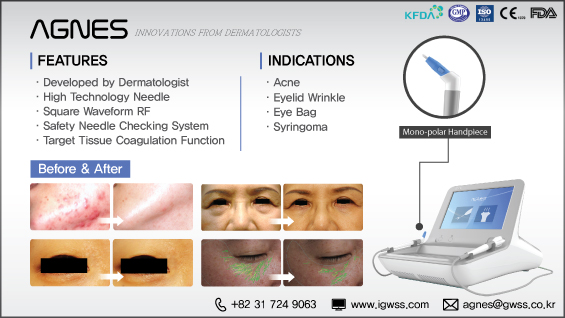
Dr. Yoon Jeunghyun of Yonsei Fam’s Clinic leads the absorbable suture market and is well-known both at home and abroad. He has been introducing each treatment modality based on his clinical experiences and animal studies. In this series, he will discuss all of his studies about absorbable suture that is applicable at clinical field immediately. This study conducted by Dr. Jung Hyun, Yoon and N-Finders Co., Ltd.
As humans age, the musculoskeletal system, skin and subcutaneous layers go through structural changes that affect the external appearance. The skin consists of the epidermis, dermis and subcutaneous fat. The epidermis is again divided into the basal layer, stratum spinosum layer, granular layer and stratum corneum. As the rete ridges flatten and the stratum corneum thins with age, fine wrinkles appear. The dermis mainly consists of collagen, elastin, and proteoglycan(hyaluronic acid, dermatan sulfate, and polypeptides, etc.). As the skin ages, all these components continue to decrease, resulting in reduced skin thickness and elasticity. Moisture content also drops and the skin starts to sag and develop deeper grooves.
The arrangement of subcutaneous fat changes as the periorbital, frontal, temporal, mandibular, mental, perioral and glabella regions thin and the submental, lateral nasolabial folds, labiomental crease, jowls, infraorbital, and malar areas thicken. This leads to an unbalanced appearance as new indentations and protrusions appear. The SMAS (Superficial Musculo-Aponeurotic System) including superficial facial muscles also age and loosen. The orbital bone extends inferolaterally, cheekbones and mandibles lose volume as bone resorption continues and deep fat surfaces. The skin loses elasticity. Sagging skin, SMAS, changed distribution of subcutaneous fat, and reduced facial bone mass from bone resorption create undesirable outlines of the face. Overall, the aged face takes on a rhombus shape with skin drooping downward.
In order to slow the process of aging and prevent the thinning of skin components, change in subcutaneous fat distribution, SMAS sagging, and bone structure change, the lost components and subcutaneous tissues should be replenished and excess fat should be removed. The extended SMAS can be tightened through physical and biochemical stimulation and supplementation. One of such methods is the RE: [N-COG] Skin Rejuvenation Therapy which uses polydioxanone (PDO), an absorbable suture material.
[Advertisement] AGNES(Radio Frequency) – Manufacturer: (www.igwss.com)
Animal Study Design

<Figure 1> Four White Yucatan pigs were used in the animal study.
Based on various studies in literature, we hypothesized that the subcutaneously inserted PDO thread will cause adipocyte reduction, regeneration of collagen fibers, angiogenesis, and metabolic enhancement of surrounding tissues. Following outcomes can be visibly observed after RE: [N-COG] Skin Rejuvenation carried out in clinical practice; improved elasticity, wrinkle reduction, clearer tone and tighter outline of the face. In order to establish scientific basis for clinical outcomes and mechanism of action for PDO used in human skin, we performed an experiment in four White Yucatan pigs whose skin is known to be similar to that of humans' (Figure 1).
-To be continued




















